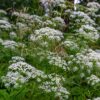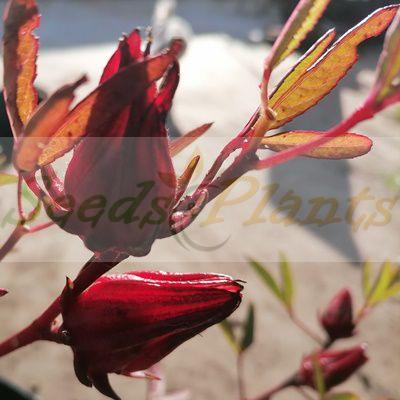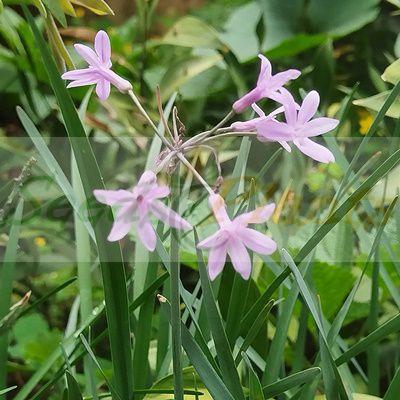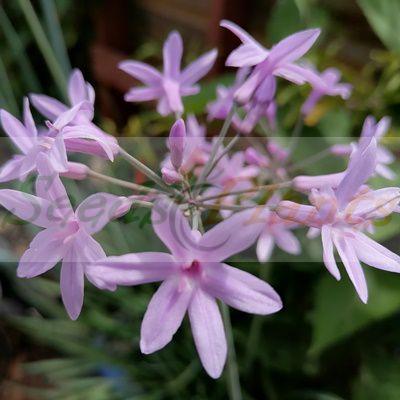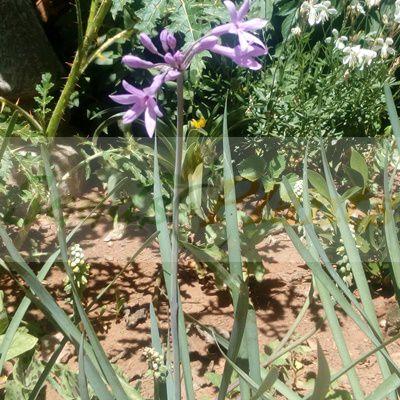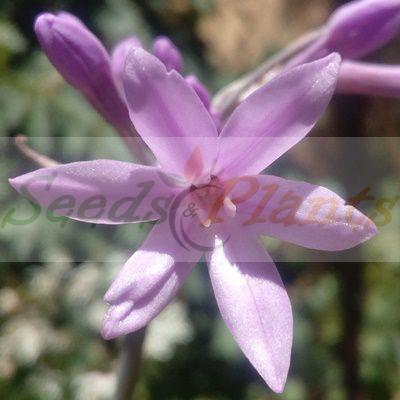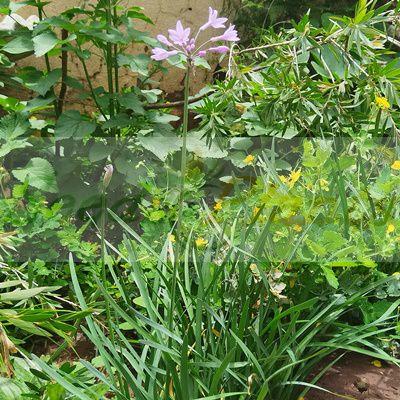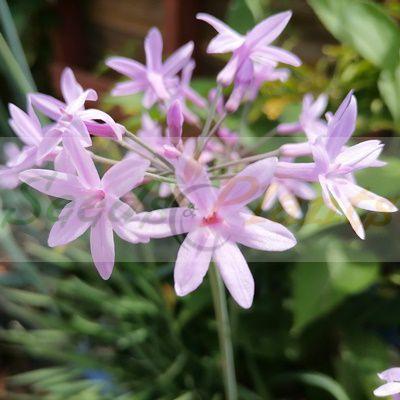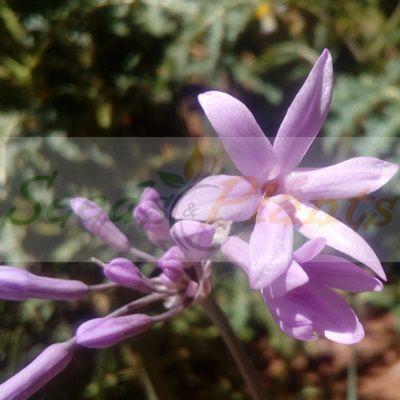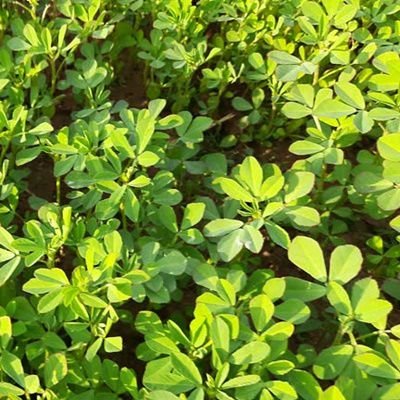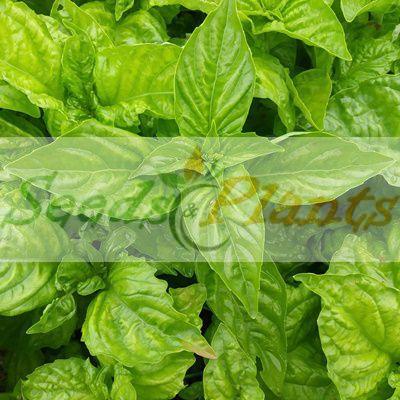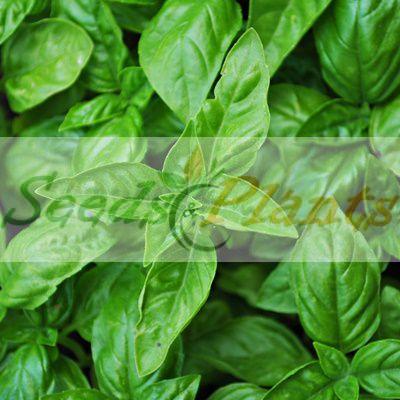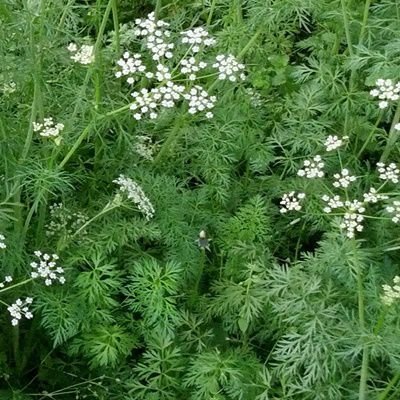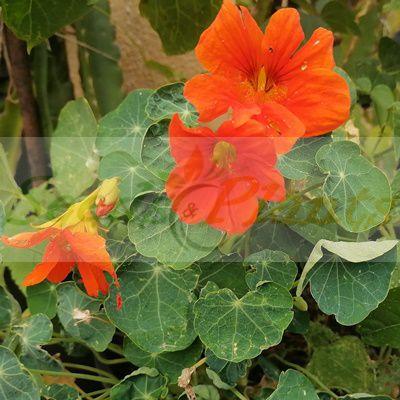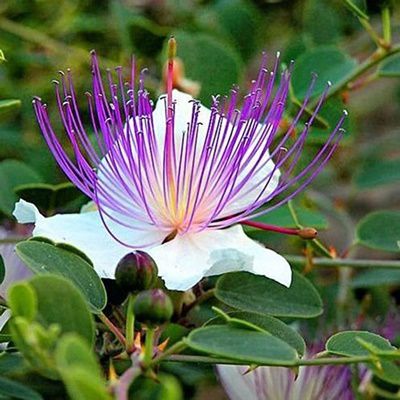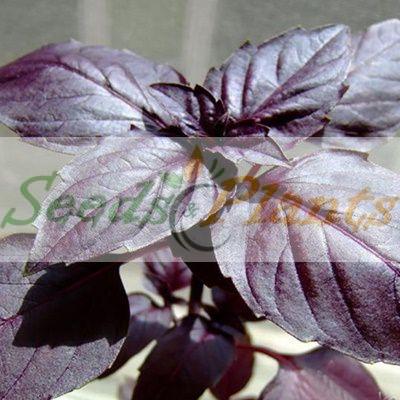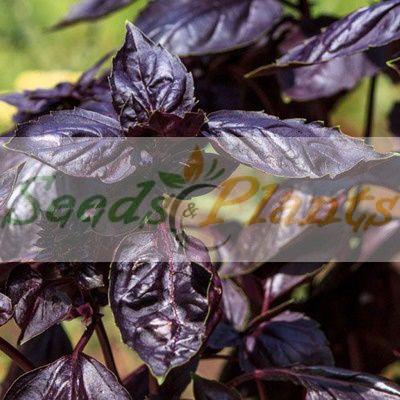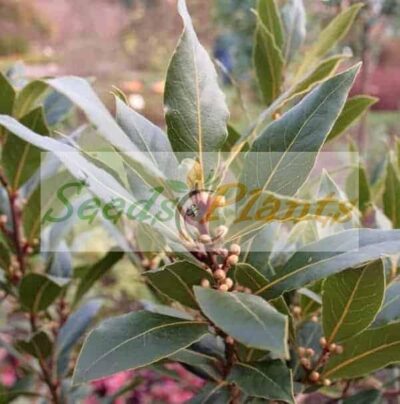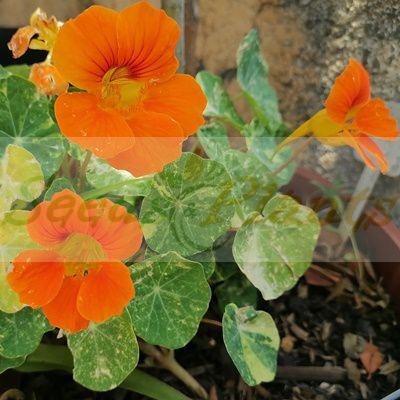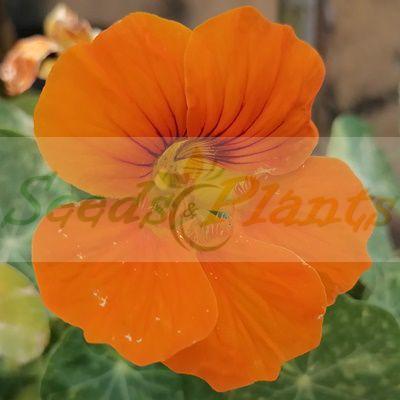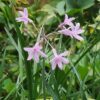🍃 Culinary Quick Facts
Culinary Info
- 🌍 Origin / Region: Southern Africa
- 🍽️ Culinary Use: Cooking, Flavoring, Garlic Substitute, Garnish, Salads, Sauces, Seasoning, Soups and Stews, Stir-frying
- 🥗 Edible Part: Bulb, Flower, Leaf, Stem
- 😋 Flavor Profile: Garlic-like
Medicinal Info
- 🌿 Medicinal Part: Bulb, Flower, Leaf, Rhizome
- 🍵 Herbal Preparation: Decoction, Infusion / Tea, Paste
- ⚕️ Healing System: African Traditional Medicine
Growth Traits
- 🌱 Life Cycle: Perennial
- 🦋 Pollinator Method: Attracts Bees, Attracts Butterflies
- 🪴 Growth Habit: Clumping
- 🌸 Flower Color: Pink
Growing Requirements
- 🌞 Sun Exposure: Full Sun
- 💧 Water Needs: Low Water
- ☀️ Growing Conditions: Cold Tolerant, Drought Tolerant, Frost Tolerant, Heat Tolerant
- 🟤 Soil Preference: Clay, Light, Loam, Moderately Fertile, Poor Soil Tolerant, Rocky, Sandy, Well-Drained
Wild Garlic – 5 Seeds
(Tulbachia violancea)
R30.00
Both the Wild Garlic leaves and flowers can be used in salads and other dishes. The plant also has many medicinal and other uses.
Common Names: Wild garlic, society garlic (Eng.); wildeknoffel, wildeknoflok (Afr.); utswelane (Xho.); isihaqa, incinsini, (Zul.)
Indoor Sowing: Spring and Summer.
Direct Sowing: Spring and Summer.
In stock
🍃 Culinary Quick Facts
Culinary Info
- 🌍 Origin / Region: Southern Africa
- 🍽️ Culinary Use: Cooking, Flavoring, Garlic Substitute, Garnish, Salads, Sauces, Seasoning, Soups and Stews, Stir-frying
- 🥗 Edible Part: Bulb, Flower, Leaf, Stem
- 😋 Flavor Profile: Garlic-like
Medicinal Info
- 🌿 Medicinal Part: Bulb, Flower, Leaf, Rhizome
- 🍵 Herbal Preparation: Decoction, Infusion / Tea, Paste
- ⚕️ Healing System: African Traditional Medicine
Growth Traits
- 🌱 Life Cycle: Perennial
- 🦋 Pollinator Method: Attracts Bees, Attracts Butterflies
- 🪴 Growth Habit: Clumping
- 🌸 Flower Color: Pink
Growing Requirements
- 🌞 Sun Exposure: Full Sun
- 💧 Water Needs: Low Water
- ☀️ Growing Conditions: Cold Tolerant, Drought Tolerant, Frost Tolerant, Heat Tolerant
- 🟤 Soil Preference: Clay, Light, Loam, Moderately Fertile, Poor Soil Tolerant, Rocky, Sandy, Well-Drained
Wild Garlic Seeds. Wild Garlic (Tulbaghia violacea) is a fast-growing, bulbous plant that reaches a height of 0.5 m. The leaves are long, narrow, strap-like, slightly fleshy and smell strongly of garlic when bruised. They grow from fat, tuberous roots which spread to form clumps of plants. The pinkish-mauve tubular flowers, clustered into umbels of up to 20 flowers, are held above the leaves on a tall flower stalk, and appear over a long period in summer (January to April). They too smell of garlic when picked. The fruit, triangular capsules, are grouped into a head, and when ripe they split to release the flattened, hard black seeds.
Wild Garlic Culinary Uses
- This attractive plant is ideal for the herb garden, as both the leaves and flowers can be used in salads and other dishes.
- Zulu people use the leaves and flowers as spinach and as a hot, peppery seasoning with meat and potatoes.
Wild Garlic Other Uses
- The smell repels fleas, ticks and mosquitoes when crushed on the skin.
- The crushed leaves may be used to discourage moles from the garden (by their strong smell)
- Wild garlic is a very good snake repellent.
Wild Garlic Medicinal Benefits
- The crushed leaves may be used to help cure sinus headaches.
- The fresh bulbs are boiled in water and the decoctions are taken orally to clear up coughs and colds.
- The bulb has been used as a remedy for pulmonary tuberculosis and to destroy intestinal worms.
- Wild garlic may prove to have the same or similar antibacterial and anti-fungal activities as has been scientifically verified for real garlic.
- The leaves are used to treat cancer of the esophagus.
- In Zulu traditional medicine they use the bulb to make an aphrodisiac medicine.
Growing Wild Garlic
Indoor Sowing: Spring and Summer.
Direct Sowing: Spring and Summer.
- The hard black seeds are best sown in spring in deep seed trays and can be planted out during their second year.
- Use a well-drained seedling mix.
- Cover the seeds lightly with the sowing mix, clean coarse sand, or milled bark.
- Keep the soil consistently moist.
- Place the trays in a warm but shaded position.
- Germination in about 30 days, but can take longer.
- Transplant the seedlings to their permanent location once they are a few inches tall.
- Water well for the first few weeks to help the plant settle.
- Mulch with a good quality compost.
- First flowering can generally be expected in the second or third year.
- It thrives in full sun, but can tolerate partial shade.
- It prefers loamy soil with an acidic, neutral, or alkaline pH.
- It can also be mass planted to form a ground-cover in sunny or partially shaded positions.
- It thrives in well-drained soil containing plenty of compost.
Can this plant be used for culinary purposes?
Wild Garlic is traditionally used for culinary purposes such as cooking and flavoring.
Does this plant have medicinal uses?
Traditionally, Wild Garlic has a history of use in African Traditional Medicine. Seeds are sold for cultivation purposes only.
Disclaimer
Medicinal Information:
All medicinal information on this website is for educational and informational purposes only and may not be construed as medical advice. The information is not intended to replace medical advice or treatment offered by healthcare professionals.
Seeds, Plants, Plant Cuttings, Geophytes and Dried Herbs:
In some countries and provinces, certain plants are deemed as invasive and are not allowed to be planted at all, whilst some plants are allowed to be grown only in certain areas or provinces. The onus is on you as the buyer to familiarize yourself with the regulations pertaining to your location, before purchasing any of our seeds, plants, plant cuttings, geophytes or dried herbs. We will not be held liable, should you purchase any seeds, plants, plant cuttings, geophytes or dried herbs. from us which are prohibited in your country or province.

